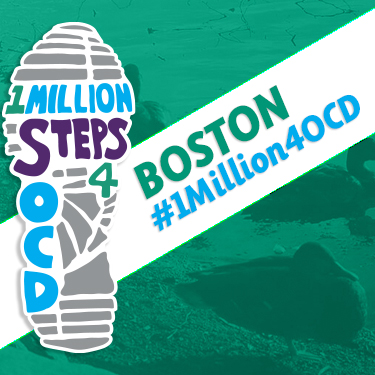 “Are you still walking?” friends often ask me. I answer, “Is there a cure for OCD and related disorders yet?” 7,400,000 steps later (over 3,700 miles), I continue to walk to tell Nathaniel’s story. One pilgrimage has morphed into another, and the miles have had an impact. Our son’s journey, as well as ours, continues, testimony to the power of words and stories as well as the unanticipated magic of the butterfly effect.
“Are you still walking?” friends often ask me. I answer, “Is there a cure for OCD and related disorders yet?” 7,400,000 steps later (over 3,700 miles), I continue to walk to tell Nathaniel’s story. One pilgrimage has morphed into another, and the miles have had an impact. Our son’s journey, as well as ours, continues, testimony to the power of words and stories as well as the unanticipated magic of the butterfly effect.
 One of Nathaniel’s favorite childhood novels was The Hobbit. I first read it to him when he was quite young, and I could see the tenacious grip of the plot in his dark brown eyes begging me to keep on reading. We understood Bilbo Baggins’s hesitancy to leave the Shire since the comfort of home and the predictability of daily life can lure anyone to complacency. But we also knew that a big adventure waited him with his first act of bravery—stepping out the door—and once the journey begins, there is no stopping it.
One of Nathaniel’s favorite childhood novels was The Hobbit. I first read it to him when he was quite young, and I could see the tenacious grip of the plot in his dark brown eyes begging me to keep on reading. We understood Bilbo Baggins’s hesitancy to leave the Shire since the comfort of home and the predictability of daily life can lure anyone to complacency. But we also knew that a big adventure waited him with his first act of bravery—stepping out the door—and once the journey begins, there is no stopping it.
I invite you to step out of your comfort zone and tell your stories too. It will make a big difference, not only in your own lives, but also in the lives of sufferers and the families and friends who live with these disorders. For me, a phone call from a family in distress who lost a son to BDD in March, an email from a woman about her daily challenges with this disorder, the courageous testimony of Eric in Sacramento at the 1,000,000 Steps walk, and six-year-old Cameron’s struggles with OCD let me know that we have yet to reach our goal.
This spring I have been re-reading the daily blogs of my walks in 2012 and 2013, and I vividly remember each day—Lynn at the breakfast diner in Philipsburg, Pat at the clinic, Milton at Kids’ Peace, Janet’s $10 contribution in Hatfield, Eric, the restaurant manager, who paid my meal at Carrabba’s, Mary Ellen at the Dunkin Donuts in Connecticut, and the warm welcome of residents at OCD Institute at McLean—all of them encounters at the heart-level that have been imprinted in every cell of my body. I told Nathaniel’s story over and over again and my listeners shared their own stories of cruel brain disorders suffered by family members, friends, or even themselves. What stories do you carry inside you? Who is your Nathaniel? What are you witnessing in your own life that needs to be shared?
Stories can heal us, but first, we have to have the courage to tell them. And when we do, we learn that we do not stand alone. Together, we create a community of hope and support that will draw more attention to the need for funding, research, and better treatment. Research is yielding answers, and more financial contributions can bring us to the tipping point. But first, we’ve got to step out the front door.
Please join us in Boston to walk on Saturday, June 7th or walk in your own communities as a public witness to these disorders. Virtual walks count too, if getting out is too difficult. But remaining isolated and alone in the Shire won’t do. Buen Camino!

